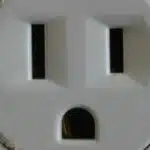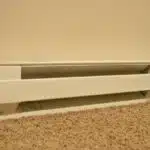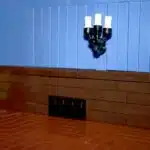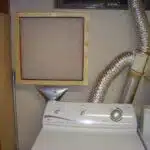Installing an electrical box is a crucial step in any wiring project. The electrical box serves as a protective enclosure for electrical connections, ensuring the safety of both the wiring and its surroundings. However, installing a cut-in electrical box can be challenging without the right tools and techniques. In this article, we will explore how to install a cut-in electrical box with Madison straps, focusing on the necessary steps and precautions to ensure a safe and reliable installation.
The Madison strap is an innovative solution for installing cut-in boxes without requiring additional support from framing or drywall. This type of strap provides a sturdy and secure mounting option that can hold up to 50 lbs., making it ideal for various applications where space or structural limitations are present. By using Madison straps, you can avoid the need for extra framing materials, saving time and effort while ensuring proper installation. In this article, we will provide step-by-step instructions on how to install an electrical box with Madison straps, highlighting essential tips and best practices along the way.
Understanding The Importance Of Electrical Box Installation
As electrical engineers, we understand the importance of electrical safety and the role that professional electrical services play in ensuring it. Electrical boxes are an essential component of any electrical installation, as they protect against potential accidents caused by exposed wiring. The proper installation of an electrical box is crucial to ensure that electricity is safely routed through a building and to prevent damage to the surrounding area.
The installation of an electrical box requires careful consideration, as improper installation can lead to serious consequences. Electrical boxes must be installed securely and correctly to minimize the risk of damage or injury. In addition, they must be sized appropriately for the type and size of wire being used. A professional electrician has the knowledge and experience necessary to determine the correct size and placement of an electrical box.
In summary, understanding the importance of electrical safety and the significance of professional electrical services is vital when it comes to installing an electrical box. Proper installation ensures that electricity is safely directed through a building while minimizing potential harm or damage. As we move forward with this guide on installing a cut-in electrical box with madison straps, keep in mind the critical role that proper installation plays in maintaining a safe environment for everyone involved.
Choosing The Right Madison Straps For Your Project
When choosing the right Madison straps for your electrical project, it’s important to consider the materials they’re made of. Madison straps come in a variety of materials, including steel, stainless steel, and zinc-plated steel. Each material has its own unique benefits and drawbacks, so it’s important to choose the one that best fits your specific needs. For example, if you’re working in a corrosive environment or need extra durability, stainless steel may be the way to go.
Another factor to consider when choosing Madison straps is their size. The most common sizes are 3/4 inch and 1 inch, but they also come in smaller and larger sizes depending on your needs. It’s important to choose the right size for your electrical box and wiring to ensure a secure fit. A too-small strap can cause damage to the box or wiring, while a too-large strap may not hold everything securely in place.
Ultimately, the choice of Madison straps will depend on the specific requirements of your electrical project. Take into account the environment where they will be used as well as the size of your electrical box and wiring. By choosing the right materials and sizes for your project, you can ensure that your electrical work is safe and secure for years to come.
As you move forward with installing your cut-in electrical box with Madison straps, it’s important to prepare your tools and workspace properly. Ensuring that you have all necessary tools on hand before starting can save time and prevent frustration during installation. Additionally, creating a clean and organized workspace can help prevent accidents or mistakes during installation. Keep any small parts or screws organized in a container or tray to avoid misplacing them during installation. With proper preparation, installing an electrical box with Madison straps can be done safely and efficiently.
Preparing Your Tools And Workspace
Gathering the necessary tools for installing a cut-in electrical box with Madison straps requires a screwdriver, a drywall saw, a drill, and a voltage tester. The workspace should be clean and well-lit and should include a flat surface for the installation. The voltage should be tested before beginning the installation to ensure the safety of the installer and the integrity of the electrical system. For safety purposes, the voltage should be tested at the circuit breaker and at the box. An appropriate voltage tester should be selected specifically for the task, and the electrical system should be shut off before beginning the installation.
Gather Necessary Tools
Selecting appropriate tools and organizing your workspace are crucial steps in installing a cut-in electrical box with Madison straps. As an electrical engineer, I understand the importance of having the right tools at hand to ensure the job is done correctly and efficiently. Gathering necessary tools such as wire strippers, pliers, a drill, screwdrivers, and a level will help make the installation process smoother.
Before beginning any electrical project, it is essential to organize your workspace. Clearing away clutter and ensuring you have enough space to work will eliminate any potential hazards that could arise during installation. Additionally, having all necessary tools within reach will save time and prevent frustration during the installation process.
In conclusion, selecting appropriate tools and organizing your workspace can make a significant difference in how smoothly an electrical installation goes. As an audience that has a subconscious desire for serving others, these steps can contribute to ensuring safety while also saving time and effort when completing projects. By taking these precautions before starting any installation project, you can be confident that you are well-prepared for success.
Set Up Workspace
As an electrical engineer, it is essential to prepare your workspace adequately before starting any installation project. Organizing tools and setting up a workspace is crucial in ensuring the success and safety of any electrical project.
To start, organizing tools that will be needed for the installation process is imperative. Having all necessary tools at hand will save time and prevent frustration during installation. Wire strippers, pliers, a drill, screwdrivers, and a level are some of the tools that should be gathered before starting an installation project.
After gathering the necessary tools, it’s time to set up your workspace. Clearing away clutter and ensuring there is enough space to work will eliminate potential hazards that could arise during installation. Additionally, having all necessary tools within reach will save time and prevent frustration during the installation process. By taking these precautions before starting any installation project, you can ensure you are well-prepared for success while also serving others by guaranteeing safety during the process.
Test Voltage
When it comes to preparing your tools and workspace for installation projects, it’s essential not to overlook the importance of testing voltage. As an electrical engineer, ensuring measuring accuracy in voltage readings is crucial in guaranteeing the safety of both yourself and those around you during installation.
Before starting any installation project, ensure that all necessary safety precautions are taken when measuring voltage. This includes wearing appropriate personal protective equipment such as insulated gloves and eye protection. Additionally, make sure all tools are rated for the voltages they will encounter during the project.
Testing voltage should be done throughout the installation process to ensure that everything is functioning correctly and safely. Using a multimeter or voltmeter can help detect any potential issues before they become significant problems. By taking these measures to test voltage throughout an installation project, you can rest assured that you have taken every precaution necessary to guarantee safety and success.
Measuring And Marking The Cut-Out Area
After preparing your tools and workspace for installing a cut-in electrical box with Madison straps, the next step is to measure and mark the cut-out area accurately. The importance of measuring accuracy cannot be overstated in electrical work. If the cut-out area is too small, it will be difficult to fit the electrical box, while a large hole can cause safety hazards and may result in a need for additional repairs.
To ensure accuracy when measuring and marking the cut-out area, it is essential to use proper tools such as a measuring tape and a pencil. When using the measuring tape, make sure that you use it correctly by placing one end against a fixed point before stretching it across to measure the other side. Also, double-check your measurements before marking them with a pencil.
Once you have measured and marked out the cut-out area accurately, you can move on to cutting the hole for the electrical box. This step requires precision as an incorrect cut can lead to problems with fitting or securing the box. In summary, careful measuring accuracy with proper tools is vital in preparing for cutting out an accurate hole for installing an electrical box with Madison straps.
Cutting The Hole For The Electrical Box
The first step in installing a cut-in electrical box with madison straps is to cut the hole where the box will be installed. This requires a few cutting tools, including a drywall saw, keyhole saw, or rotary tool with a cutting wheel. Make sure to wear proper safety gear, such as goggles and gloves, to prevent any accidents or injuries.
Before beginning the cutting process, it is important to mark the spot where the electrical box will be installed. Use a pencil and level to ensure that the markings are straight and accurate. Once you have marked the spot, use your chosen cutting tool to carefully cut out the hole for the electrical box.
Keep in mind that precision is key when cutting out the hole for the electrical box. Take your time and make sure that the hole fits snugly around the box. If necessary, use sandpaper or a file to trim any rough edges or corners. With this step completed, you can now move on to mounting the madison straps onto the box.
Subsequent section topic: Mounting Madison Straps onto Electrical Box
Write only one sentence transition from previous section:
Once you have successfully cut out the hole for your electrical box using appropriate safety measures and tools, it’s time to mount the madison straps onto your newly installed box.
Mounting The Madison Straps To The Box
Once the electrical box is in place, it’s time to mount the Madison straps. The first step is to align the two straps on opposite sides of the box. Apply pressure to hold them in place flush against the side of the box. It’s important to ensure that both straps are level with each other and straight.
Next, insert a screw into each hole on one side of the strap and tighten until it is snugly in place. Repeat this process for every hole on both sides of each strap. Be sure not to over-tighten as this can cause damage to both the strap and electrical box.
Installing Madison straps may seem like a simple task, but it is a crucial part of securely mounting an electrical box. The correct application of pressure and proper tightening of screws will ensure that your box remains stable and secure for years to come. Once you have successfully mounted your Madison straps, you are ready for the next step: inserting the box into the wall.
Inserting The Box Into The Wall
Once you have prepared the wall for installation, it is time to insert the cut-in electrical box. This step requires precision and accuracy, as improper positioning can lead to future problems or even safety hazards.
To begin, ensure that the box is level with the opening in the wall. This will provide a stable foundation for wiring and other components later on. Additionally, make sure that there is enough depth for wires to fit comfortably within the box.
Next, carefully position the box into place and mark where it will be secured onto the wall. Double-check its alignment before proceeding to avoid any mistakes. Once you are confident in its placement, you may proceed with attaching the box to the wall using screws or another appropriate method.
As you insert and secure the cut-in electrical box, remember that attention to detail is key. Take your time and ensure that everything is properly aligned and secure before moving on to the next step of securing it with madison straps.
Securing The Box With The Madison Straps
Accurate measurements of the wall are essential for determining the appropriate size of the Madison straps. The straps should be cut to fit the size of the electrical box while allowing a few inches of slack for securing the box. The straps should be positioned firmly against the wall and secured with nails or screws to ensure that the box is held in place. Adequate preparation of the straps is necessary to ensure that the box is properly secured to the wall. The straps should be secured with bolts or screws on the side of the box that is closest to the wall. The straps should be pulled tight to secure the box to the wall and the bolts should be tightened to ensure that the box is held securely in place. Finally, the straps should be tested to ensure that the box is held firmly against the wall.
Measuring The Wall
When it comes to securing an electrical box with Madison straps, the first step is to measure the wall accurately. Wall thickness can vary greatly depending on the type of construction and materials being used. It’s essential to take precise measurements to ensure a snug fit for the box.
Measuring accuracy is crucial in determining the correct size of the cut-out hole required for the electrical box. It’s recommended to use a measuring tape or ruler that is at least 12 inches long for better accuracy. Take multiple measurements at different points on the wall and average them out to ensure consistency.
Additionally, it’s important to consider any potential obstacles behind the wall, such as pipes or wires, which may affect where you place your electrical box. Taking these factors into account when measuring will help prevent any issues from arising during installation and ensure your electrical box is securely fastened in place.
Preparing The Straps
To ensure a secure and stable installation of electrical boxes, it’s crucial to use reliable and robust materials like Madison straps. However, properly securing the box requires more than just high-quality straps; it also involves preparing the straps for installation. One essential aspect of this preparation is ensuring strap flexibility, which allows for easy manipulation during installation. Moreover, measuring accuracy must be precise to ensure that the straps fit securely around the box and wall.
Measuring accuracy is critical when cutting Madison straps to size. To achieve a snug fit, measure the length and width of the electrical box accurately. Then add at least 2 inches to both the length and width to provide enough slack for wrapping around the box. After obtaining these measurements, cut two equal lengths of Madison strap using wire snips or bolt cutters.
Once you have cut your Madison straps to size, prepare them for installation by ensuring their flexibility. Over time, metal straps can become brittle and stiff due to exposure to harsh weather conditions or age-related wear and tear. Therefore, before installing your electrical box with Madison straps, flex each strap back-and-forth multiple times using pliers or your hands until they are no longer stiff but retain their tensile strength. This process ensures that these straps can wrap tightly around your box while still allowing some movement if needed during installation or later adjustments.
Securing The Box
In securing the electrical box, the use of reliable and robust materials such as Madison straps is crucial. However, it is not enough to have high-quality straps; proper installation is also important. One common mistake is not ensuring that the box is secured tightly enough to avoid any movement or shifting. This can lead to potential safety hazards and damage to the electrical system. To prevent this, it is essential to prepare and install the Madison straps properly.
To secure the box with Madison straps, first ensure that the straps are cut accurately using wire snips or bolt cutters. Measuring accuracy is critical in achieving a snug fit around the box and wall. Remember to add at least two inches to both length and width measurements for slack while wrapping around the box. After cutting, ensure flexibility by flexing each strap back-and-forth multiple times using pliers or hands until it regains its tensile strength.
Tools needed for securing an electrical box with Madison straps include wire snips or bolt cutters and pliers. Common mistakes to avoid include incorrect measurement of length and width of electrical boxes leading to loose-fitting straps. It’s important always to add at least two inches for slack around your box when measuring for cuts. Another common mistake involves installing stiff or brittle metal straps without first ensuring their flexibility through repeated bending before installation. By following these steps correctly during installation, you can ensure a safe and stable electrical system in your home or office building.
Testing The Box For Stability
After installing a cut-in electrical box with Madison straps, it is essential to test the box for stability. The testing process ensures that the box is firmly secured and will not move or cause any hazards. Different testing techniques can be used to evaluate the box’s stability, and these include:
Visual inspection: This involves checking if the box is level and flush against the wall. It also involves examining the Madison straps to ensure they are tightly secured to the box.
Push-pull test: This technique involves pushing and pulling on the box to see if it moves or wobbles. If there is any movement, it may indicate that the Madison straps are not tight enough.
Load test: This involves placing a load on the box to see how much weight it can hold without moving or detaching from the wall. A load of up to 50 pounds should be supported by an electrical box without any issues.
Once you have tested for stability using these techniques, you can be confident that your cut-in electrical box with Madison straps is safe and secure. The next step in the installation process is connecting your electrical wires, which we will cover in detail in our next section.
Transition: Now that we have ensured our cut-in electrical box with Madison straps is secure, let’s move on to connecting our electrical wires safely and efficiently.
Connecting The Electrical Wires
After ensuring that the cut-in electrical box is stable, the next step is to connect the electrical wires. Before doing so, it is important to check the connections in order to avoid any potential hazards. This can be done by examining each wire for any signs of damage or loose connections. Additionally, it is crucial to ensure that each wire is properly labeled and matched with its corresponding terminal.
Once the connections have been checked, it is time to ground the electrical box using appropriate grounding techniques. Grounding serves as a safety measure that protects against electric shock and fire. The most common grounding technique involves connecting a ground wire to a designated screw in the electrical box and then connecting the other end of the wire to an appropriate ground source such as a metal water pipe or grounding rod.
After completing these steps, you can move on to attaching the cover plate onto the electrical box in order to complete the installation process. However, it is important to note that before doing so, all wiring should be carefully tucked inside the box and secured with Madison straps in order to prevent any movement or potential hazards. By following these guidelines for installing a cut-in electrical box with Madison straps, you can ensure a safe and efficient installation process that meets all necessary standards and regulations.
Attaching The Cover Plate
After successfully installing the cut-in electrical box with Madison straps, it is time to attach the cover plate. The cover plate serves two purposes: it protects the wiring inside the box and provides a decorative finish to the installation. There are different types of cover plates available in the market, so be sure to choose one that complements your interior design.
When selecting a cover plate, consider both its functionality and aesthetic appeal. Cover plates come in various sizes, shapes, and colors. Some even feature decorative options such as engraved designs or unique finishes like brushed nickel or oil-rubbed bronze. Ensure that your chosen cover plate fits securely over the electrical box; otherwise, it may pose a safety hazard.
To attach the cover plate, align it with the holes on the electrical box and use screws to secure it in place. Tighten them just enough to ensure that the cover plate stays put but not too much that you damage it or strip its threading. Once you have attached the cover plate, turn on your power supply and test if everything works correctly before proceeding to sealant and finishing touches.
Transition into subsequent section about sealant and finishing touches: Now that you have successfully attached your chosen cover plate, it’s time to add sealant and finishing touches to give your installation a polished look.
Sealant And Finishing Touches
After the cut-in electrical box and Madison straps have been installed, it is important to apply sealant to prevent any air or moisture from entering. Applying a thin layer of silicone sealant around the edges of the box will ensure that it is properly sealed. This step is crucial in preventing any potential electrical hazards such as fires or short circuits.
Once the sealant has dried, it’s time to add finishing touches to make everything look neat and tidy. Using a putty knife or similar tool, remove any excess sealant from around the edges of the box. This will give the installation a professional-looking finish. It’s also important to clean up any debris from drilling holes and installing screws.
In summary, applying sealant and adding finishing touches are essential steps in ensuring a safe and professional-looking installation of a cut-in electrical box with Madison straps. With these steps completed, troubleshooting common issues can be addressed if needed.
Troubleshooting Common Issues
Common mistakes when installing a cut-in electrical box with Madison straps include not measuring the placement of the box accurately, not securing the straps tightly enough, and not using the correct tools for cutting into the wall. These mistakes can lead to improper installation, which can result in safety hazards such as electrical shocks or fires.
To troubleshoot these common issues, it is important to double-check measurements and use a level to ensure that the box is straight before securing the Madison straps. Additionally, using a high-quality drill and properly sized hole saw can make cutting into the wall much easier. Finally, ensuring that all connections are tight and secure will reduce the risk of electrical hazards.
By taking these troubleshooting techniques into consideration, users can avoid common mistakes and ensure proper installation of their cut-in electrical box with Madison straps. However, it is important to always prioritize safety precautions and best practices when working with electricity. In the next section, we will discuss important safety measures that should be taken during this process.
Safety Precautions And Best Practices
Moving on from troubleshooting common issues, it is crucial to prioritize safety precautions and best practices when installing a cut-in electrical box with Madison straps. As an electrical engineer, it is important to always be mindful of the potential hazards that come with electrical work.
First and foremost, ensure that you are equipped with the proper safety gear such as gloves and safety glasses. It is also important to abide by all relevant electrical codes in your area. These codes are put in place for the safety of both yourself and others, so it is imperative that they are followed accordingly.
In addition to wearing protective gear and following electrical codes, it is recommended to seek guidance from a professional electrician if you are uncertain about any aspect of the installation process. Remember, safety should always be your top priority when working with electricity. By taking these necessary precautions, you can enjoy a safe and secure electrical installation for years to come.
Conclusion: Enjoy Your Safe And Secure Electrical Installation!
Madison straps are a great tool for installing cut-in electrical boxes. In addition to providing a secure and stable installation, Madison straps also have a number of other benefits. For one, they are relatively easy to install and can save you time compared to other installation methods.
One common mistake that people make when installing cut-in electrical boxes with Madison straps is failing to properly secure the straps themselves. It’s important to ensure that the straps are tightly screwed into place so that they can support the weight of the box and any wiring attached to it. Additionally, be sure to use the correct size of Madison strap for your particular installation; using one that is too small or too large can result in an insecure or unstable installation.
Ultimately, using Madison straps is a great way to ensure a safe and secure electrical installation. By following these guidelines and avoiding common mistakes during installation, you can rest assured that your wires and electrical components will remain firmly in place. So go ahead and enjoy your newly installed cut-in electrical box knowing that it was safely installed with Madison straps!
Conclusion
The proper installation of electrical boxes is crucial to ensure safe and efficient electrical systems. One method for installing a cut-in electrical box is by using Madison straps, which provide a secure grip on the drywall or other material. Before beginning the installation process, it is important to choose the appropriate Madison straps for your project and gather all necessary tools.
Measuring and marking the cut-out area accurately is essential in ensuring that the electrical box fits snugly into place. After cutting the hole, applying sealant around the edges can prevent air leaks and improve energy efficiency. Troubleshooting common issues such as loose or misaligned boxes can also be addressed with Madison straps.
Safety precautions must be taken throughout the entire process, including turning off power to the area being worked on and wearing appropriate protective gear. Following these steps will result in a safe and secure electrical installation that meets all necessary codes and regulations. In conclusion, with proper planning, careful execution, and attention to detail, installing a cut-in electrical box with Madison straps can be a straightforward task for any skilled electrician.
Image Credits
- “‘Invisible’ Straps” by Tabbymom Jen (featured)








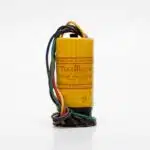







![How To Replace A Single-Pole Wall Switch 16 '... All in all it's just another [switch] in the wall.' ...](https://green-life.blog/wp-content/uploads/2023/05/17xmP5qMtVjq-150x150.jpg.webp)

